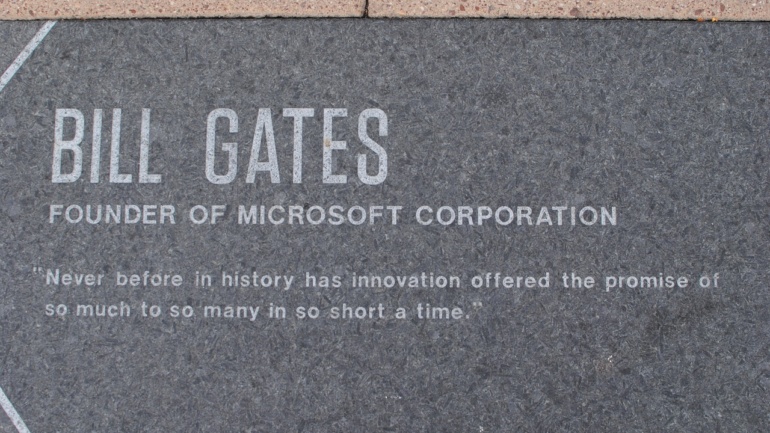
By Sophia Arnao, Staff Writer for Save The Water™ | March 6, 2016
Poor water quality from aging infrastructure
The water crisis in Flint, Michigan, is everyone’s worst nightmare. Unfortunately, the town is not alone. While Flint may be in the media spotlight now, there are many other cities nationwide in which water contamination has become a major issue, and sadly, the solutions are too costly for the small communities they afflict.
In St. Joseph, Louisiana, tap water has been lacking in quality for years. The town has been under numerous boil notices since 2012, and some residents claim the water that comes out of the tap smells like metal. Viral images of bathtubs and bottles full of what looks like rusty chocolate milk have surfaced on social media, and although it is deemed safe for consumption, most residents are hesitant to use it. Recently, after a water pipe broke, the water color changed to a chalky brown. The pipe infrastructure in St. Joseph is around 90 years old, and although the water is still considered portable for now, the aging pipes may be forewarning more problems to come.
Deteriorating pipes are not an uncommon problem in small cities, especially in impoverished ones like St. Joseph. Flint has a similar issue that poses even more of a danger due to the lead in the pipe walls leaching into the tap water and poisoning residents.
Iron in St. Joseph’s water supply
Luckily, lead wasn’t the problem in St. Joseph. Instead, officials say the most probable cause of the brown water is the high concentration of iron, an element that is not considered a serious health risk by the Environmental Protection Agency.
Iron does not have the same federal restrictions as uranium and lead, for example. According to the World Health Organization (1996), Iron is an essential part of human nutrition, with the minimum daily recommendation ranging from 10 to 50 milligrams. On the other hand, ingesting too much can have fatal consequences, as the average lethal dose is around 200-250 milligrams per kilogram of body weight. That same amount for a 150-pound (68-kilogram) person would equate to 1,400 liters of St. Joseph’s water.
While that may seem impossible to drink, the water still isn’t necessarily healthy. In 2013, the Louisiana Department of Health and Hospitals reported the iron concentration in the water to be 9.74 milligrams per liter. And although it doesn’t enforce it, the EPA has set a recommended Secondary Maximum Contaminant Level of 0.3 mg/L, meaning the St. Joseph water is over three times the recommended concentration.
What can be done?
Revamping the entire pipe system would obviously require a lot of money—about $8 million according to some estimates. And in a town of 1,200 residents, that’s no small task. State Health Officer Dr. Jimmy Guidry claims that because there is such a small customer base, the local water companies don’t have enough funding to improve the water system over time, as might happen in larger cities. Another reason funding is lacking is because St. Joseph was denied a request for over $6 million in state funding because the city failed to submit several mandatory audits by the deadline. Once the audits are turned in and contractors for the overhaul project are selected, $1.2 million will be released to begin improvements.
Although it will require lots of time and money, replacing the entire pipe infrastructure is by far the best solution. Residents are spending hundreds of dollars apiece on bottled water each month for drinking, bathing, and cooking. And in a town where a third of residents are below the poverty line, this is definitely a problem. In the meantime, the city should not charge residents for the brown water, and local governments should work to release the funds as soon as possible.
In addition, Save the Water and other organizations could help by identifying which chemicals are actually in the water. From there, proper solutions could be suggested and implemented to treat the water at least a little bit. Other cities with aging pipes should be aware of these many potential problems as well, as they might be able to fix the problem before it starts.
References
- Alex Mierjeski. January 30, 2016. “What is Going on With the Water in St. Joseph, Louisiana?” ATTN. http://www.attn.com/stories/5559/louisiana-water-crisis-water-quality
- Bob Lenox. January 22, 2016. “Water woes plague St. Joseph.” The News Star. http://www.thenewsstar.com/story/news/2016/01/22/water-woes-plague-st-joseph/79172870/
- CNN Wire. February 23, 2016. “Brown tap water deemed legal and safe since it’s high in iron, not lead.” FOX 61. http://fox61.com/2016/02/23/brown-tap-water-deemed-legal-and-safe-since-its-high-in-iron-not-lead/
- Lauren Zanolli,. February 7, 2016d. “Water woes: Tap runs brown in Louisiana’s impoverished northeast.” Al Jazeera America. http://america.aljazeera.com/articles/2016/2/7/louisiana-northeast-water-woes.html
- Mark Ballard. February 4, 2016. “State says St. Joseph’s brown drinking water is safe.” The Advocate. http://theadvocate.com/news/14761460-87/state-and-federal-officials-working-on-st-joseph-water-problem
- National Public Radio. February 6, 2016. “Beyond Flint, Michigan: In The South, Another Water Crisis Has Been Unfolding For Years.” Retrieved from http://www.npr.org/2016/02/06/465702398/beyond-flint-in-the-south-another-water-crisis-has-been-unfolding-for-years
- Sarah Ganim and Linh Tran. January 13, 2016. “How tap water became toxic in Flint, Michigan.” CNN. http://www.cnn.com/2016/01/11/health/toxic-tap-water-flint-michigan/
- World Health Organization. 1996. “Iron in Drinking-water.” http://www.who.int/water_sanitation_health/dwq/chemicals/iron.pdf



